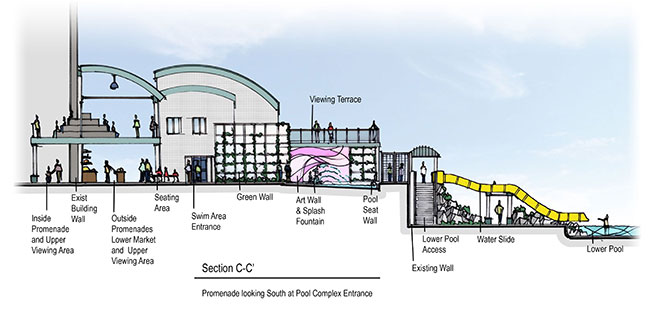Times of economic downturn leave many anchor store spaces and malls vacated, but the recent pandemic is accelerating this trend and is also impacting many industries outside of retail. Companies have either gone bankrupt or have shifted how they deliver
goods so that their footprint isn’t as expansive, which leaves a lot of opportunity for rethinking how to reuse vacated infrastructure. Adaptive reuse of spaces can be done for a wide range of functions, from office spaces and housing to facilities
in healthcare, senior living, and sports and recreation. While urban environments tend to be hotspots for reuse projects, our firm has successfully transformed many spaces to fill client needs across the country. The possibilities for adaptive reuse
projects are seemingly limitless, but several factors need to be considered before a space is transformed.
Considerations Before Adaptive Reuse
While there is no one-size-fits-all checklist for adaptive reuse projects, architects need to first consider the physical space to make sure that it can accommodate the intended reuse, including whether the utilities can be upgraded to serve new functions.
Additionally, it’s important to consider the zoning and entitlement for the new use and whether the city, jurisdiction, and neighborhood committees will allow for the property to be converted. There’s a lot of upfront work that needs to
be performed so the city planning agencies and neighborhood development groups will sign off. Depending on the project and location, there may be variance, design, and zoning reviews that need to take place before construction is even considered.
Instead of superimposing one’s own design aesthetic, we are working to preserve a link between the facility and the community while also enhancing and updating the spaces to work well with the community’s plans for the future. ”
Erica
Nelles and Dan Anderton
The Benefits
Contrary to popular belief, adaptive reuse projects are seldom cheaper than new building projects, and saving costs are not typically the primary reason for reusing a space. Rather, the source of inspiration for an adaptive reuse project for many of the
clients we work with is in finding unique environments and utilizing their existing design aesthetic. For several clients, it’s important to have each location be very specific to the community, such as a historic post office or school that
was once the center of the community and speaks to the community’s rich history.
One example of a successful adaptive reuse project we completed in Orange County, California, was a Texaco gas station we converted into a coffee shop. Several emerging brands, such as our client in this case, have taken interest in existing architecture
that will set them apart from more traditional strip mall instillations.
Just south of that project in San Marco, California, we are working with a client on a new sports and entertainment facility that will reuse a sanitary landfill processing plant that had been abandoned for over 20 years. The 180,000 square feet of space
will allow for the client to include several entertainment features, including indoor sports arenas, pools, rock climbing walls, and a fitness center.

How the Pandemic is Impacting Markets
While it has only been a number of months since the pandemic broke in the U.S. and the full impact is yet to be realized, certain trends have emerged with regard to adaptive reuse projects in some markets. While COVID-19 is accelerating the vacancy of
spaces of all kinds, retail and hospitality remain the industries that have been most immediately affected. Larger companies that have a solid technology base can weather the storm better than smaller businesses, and so those larger clients are pursuing
more expansion projects.
In the commercial real estate market, for the first time in a decade, we are seeing tenants lease spaces in an environment that favors the lessee, which has led to several real estate clients accelerating their growth due to the favorable leasing climate.
Before the pandemic, residential buildings were putting a strong focus on communal gathering spaces while keeping living units small, however, the pandemic could reverse that trend. We are also expecting an additional emphasis to be placed on outdoor
living spaces. From a landscape architecture standpoint, we expect to see smaller gathering areas that are confined by foliage and pathways that are wider and spread further apart. From a building design standpoint, we are already seeing clients put
a larger emphasis on patios and open-air outdoor spaces.
A Rewarding Challenge
From our viewpoint, working on adaptive reuse projects is rewarding because each project is unique, and you learn something new with each challenge. Instead of superimposing one’s own design aesthetic, we are working to preserve a link between the
facility and the community while also enhancing and updating the spaces to work well with the community’s plans for the future.